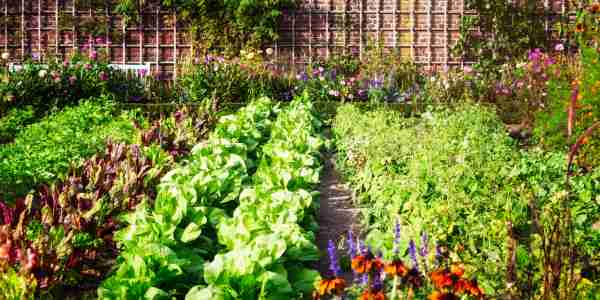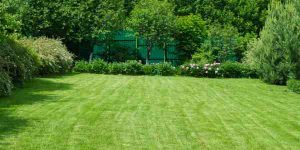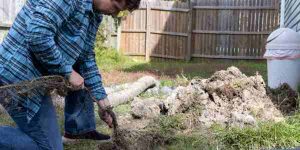How to Create a Vegetable Garden

How to Create a Productive Vegetable Garden
Creating a productive vegetable garden is a fulfilling endeavor that provides fresh, homegrown produce while promoting physical activity and environmental stewardship. Whether you’re a novice gardener or an experienced green thumb, optimizing your garden’s productivity requires careful planning, consistent care, and a few expert tips. Here’s a comprehensive guide on how to create a productive vegetable garden, with a touch of professional advice from Impact Landscapes to ensure your success.
1. Planning Your Garden
Effective planning is the cornerstone of a productive vegetable garden. Start by considering the following:
- Location: Choose a spot that receives at least 6-8 hours of sunlight daily. Most vegetables need full sun to thrive.
- Soil Quality: Test your soil to determine its pH and nutrient levels. Vegetables typically prefer a slightly acidic to neutral pH (6.0-7.0). Impact Landscapes offers soil testing and amendment services to ensure your soil is in top condition.
- Layout: Design your garden layout based on the space available and the vegetables you plan to grow. Raised beds, container gardens, and traditional in-ground plots each have their benefits.
2. Choosing the Right Vegetables
Select vegetables that suit your climate, soil type, and personal preferences. Some vegetables are easier to grow and more productive than others. Consider:
- Cool-Season Crops: Lettuce, spinach, radishes, and peas thrive in cooler weather and can be planted in early spring or fall.
- Warm-Season Crops: Tomatoes, peppers, cucumbers, and beans need warmer temperatures and should be planted after the last frost.
- Continuous Harvest: Opt for vegetables that produce over a long period, such as zucchini, cherry tomatoes, and leafy greens.
3. Preparing the Soil
Healthy soil is crucial for a productive garden. Here are some steps to prepare your soil:
- Clearing: Remove any weeds, rocks, or debris from your garden area.
- Amending: Add organic matter such as compost, well-rotted manure, or leaf mold to improve soil structure and fertility. Impact Landscapes can provide high-quality compost and soil amendments tailored to your garden’s needs.
- Tilling: Loosen the soil to a depth of at least 12 inches to encourage root growth and improve drainage.
4. Planting Techniques
Proper planting techniques can significantly impact your garden’s productivity:
- Spacing: Follow the recommended spacing for each vegetable to prevent overcrowding and ensure each plant has enough room to grow.
- Succession Planting: Maximize your garden’s yield by planting successive crops. For example, follow early spring lettuce with summer beans and fall carrots.
- Companion Planting: Grow plants that benefit each other together. For instance, planting basil near tomatoes can enhance growth and deter pests.
5. Watering and Irrigation
Consistent watering is essential for a thriving vegetable garden. Here are some tips:
- Deep Watering: Water deeply and infrequently to encourage deep root growth. Aim for about 1 inch of water per week.
- Mulching: Apply mulch around plants to conserve moisture, suppress weeds, and regulate soil temperature.
- Irrigation Systems: Consider installing drip irrigation or soaker hoses for efficient and consistent watering. Impact Landscapes can help design and install an effective irrigation system tailored to your garden’s layout.
6. Fertilizing
Fertilizing your garden correctly will ensure your plants receive the nutrients they need to produce bountiful harvests:
- Organic Fertilizers: Use organic fertilizers such as compost, fish emulsion, or bone meal to provide essential nutrients.
- Timing: Fertilize at planting time and periodically throughout the growing season according to the needs of each crop.
7. Pest and Disease Management
Managing pests and diseases is vital to maintaining a productive garden:
- Monitoring: Regularly inspect your plants for signs of pests or disease. Early detection is key to effective management.
- Natural Remedies: Use natural pest control methods such as neem oil, insecticidal soap, and companion planting.
- Professional Help: For persistent issues, Impact Landscapes offers pest and disease management services, ensuring your garden remains healthy and productive.
8. Harvesting
Knowing when and how to harvest your vegetables will maximize their flavor and nutritional value:
- Timing: Harvest vegetables at their peak ripeness. For example, pick tomatoes when they are fully colored and slightly soft.
- Technique: Use sharp scissors or pruners to harvest vegetables to avoid damaging plants.
9. Maintenance
Regular maintenance is essential to keep your garden productive throughout the growing season:
- Weeding: Keep weeds in check to reduce competition for nutrients and water.
- Pruning: Prune plants like tomatoes and peppers to encourage airflow and prevent disease.
- Staking: Support tall or vining plants with stakes, cages, or trellises.
Conclusion
Creating a productive vegetable garden is a rewarding process that involves careful planning, diligent care, and strategic interventions. By following these steps, you can enjoy a bountiful harvest and the satisfaction of growing your own food. For additional support, including soil testing, irrigation design, and pest management, consider partnering with Impact Landscapes. Our expert services can help ensure your vegetable garden thrives, providing you with fresh produce all season long. Happy gardening!



